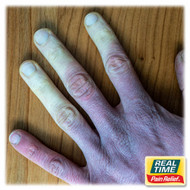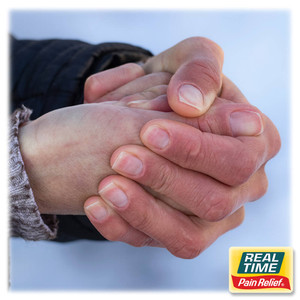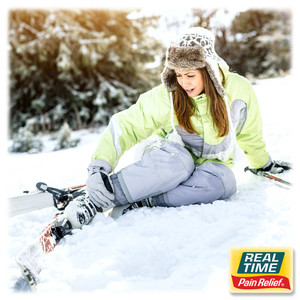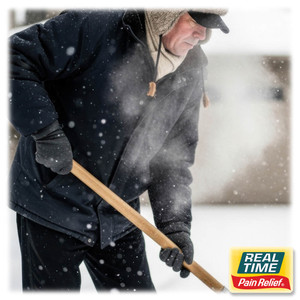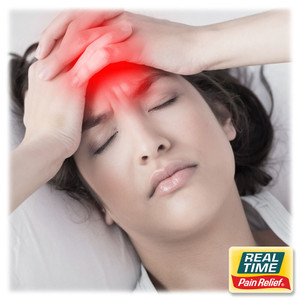Raynaud’s Phenomenon: Finding Warmth and Comfort with Nature’s Ingredients
Posted by Dennis R Escalera on 1st Oct 2025
Introduction
As autumn settles in and temperatures drop, many people begin to feel the seasonal effects on their bodies. For those with Raynaud’s phenomenon, however, the cold brings more than just a chill. Fingers, toes, ears, and even the tip of the nose may suddenly turn white or bluish, becoming numb and painful. This vascular condition affects blood flow to extremities and can make everyday activities—from buttoning a coat to holding a cup—uncomfortable or even excruciating.
Fortunately, there are strategies to help manage Raynaud’s symptoms, including lifestyle adjustments, protective habits, and topical solutions formulated with nature’s ingredients. By understanding the condition and knowing how to support circulation and comfort, individuals living with Raynaud’s can enjoy the colder seasons with greater ease.
What Is Raynaud’s Phenomenon?
Raynaud’s phenomenon is a condition that causes episodic narrowing of blood vessels (vasospasms) in response to cold temperatures or stress. This restricts blood flow to extremities, especially fingers and toes, and leads to visible color changes in the skin.
There are two main types:
- Primary Raynaud’s (Raynaud’s disease): The more common and less severe type, occurring without an underlying condition.
- Secondary Raynaud’s (Raynaud’s syndrome): Linked to autoimmune or connective tissue diseases such as scleroderma, lupus, or rheumatoid arthritis. This type is often more severe and may lead to complications like ulcers or infections.
The hallmark symptoms include:
- Color changes: Typically white (lack of blood flow), then blue (oxygen depletion), followed by red (as circulation returns).
- Cold, numb sensations: Fingers or toes feel icy and difficult to move.
- Tingling or throbbing pain: As blood returns, discomfort may spike before normal sensation resumes.
Why Raynaud’s Worsens in Autumn and Winter
Seasonal changes play a significant role in Raynaud’s episodes. The condition is most noticeable when temperatures drop because cold air naturally constricts blood vessels. For those with Raynaud’s, the response is exaggerated, making it difficult for extremities to stay warm.
Other contributing factors include:
- Barometric pressure fluctuations: Common in autumn, these can trigger vascular sensitivity.
- Stress levels: Seasonal transitions, school, work, and holiday pressures may increase emotional stress, which is another Raynaud’s trigger.
- Reduced sunlight exposure: Shorter days may affect mood and energy, indirectly increasing stress-related flares.
Who Is at Risk?
Raynaud’s affects about 3–5% of the U.S. population, though rates may be higher in colder climates. Risk factors include:
- Gender: Women are more likely to develop Raynaud’s.
- Age: Primary Raynaud’s often begins between ages 15 and 30.
- Geography: Colder regions see more cases.
- Family history: Genetics play a role.
- Occupational factors: People who work with vibrating tools (e.g., jackhammers) may develop Raynaud’s-like symptoms.
Managing Raynaud’s Through Lifestyle Changes
While there is no cure, many strategies help reduce the frequency and severity of episodes. These include:
1. Stay Warm and Layered
- Dress in multiple thin layers to trap heat.
- Wear wool socks, insulated gloves, and lined boots when outdoors.
- Use hand warmers or heated gloves during prolonged outdoor exposure.
2. Avoid Rapid Temperature Changes
- Warm up your car before driving.
- Use insulated travel mugs to avoid holding cold drinks.
- Keep your home environment comfortably warm.
3. Stress Reduction Techniques
Since stress can trigger Raynaud’s, practices such as deep breathing, yoga, meditation, or gentle exercise can help regulate vascular responses.
4. Regular Exercise
Moderate activity promotes healthy blood circulation, keeping extremities warmer over time. Walking, swimming, or low-impact aerobics are good options.
5. Dietary Support
Certain foods may support vascular health:
- Omega-3 fatty acids (from salmon, flaxseeds, walnuts) may improve circulation.
- Magnesium-rich foods (leafy greens, pumpkin seeds) support vascular relaxation.
- Cayenne pepper and other spices may encourage blood flow.
Topical Relief with Nature’s Ingredients
One of the most effective comfort strategies for Raynaud’s is the application of topical creams and lotions designed to support circulation, warm the skin, and soothe discomfort. Many nature-derived ingredients have properties that encourage blood flow, reduce pain, or protect the skin barrier.
Here are some noteworthy ingredients:
1. Capsaicin (from chili peppers)
- Gently stimulates nerve endings and blood vessels.
- Creates a warming sensation that can relieve cold-induced pain.
- May reduce nerve hypersensitivity over time.
2. Menthol (from peppermint oil)
- Provides a cooling-to-warming sensation that stimulates circulation.
- Activates sensory receptors, distracting from pain signals.
- Refreshes skin while improving comfort.
3. Eucalyptus Oil
- Known for its mild warming properties.
- Enhances blood circulation in applied areas.
- Contains anti-inflammatory compounds that may reduce swelling.
4. Arnica Montana
- Traditionally used for bruising and muscle pain.
- Helps reduce discomfort and swelling after vascular spasms.
- Supports faster recovery of sore tissues.
5. Ginger Extract
- Naturally warming herb that stimulates circulation.
- May reduce inflammation and stiffness.
- Often combined with other botanicals for synergistic effects.
6. Shea Butter and Aloe Vera
- While not circulation enhancers, they protect skin from dryness and cracking.
- Important since Raynaud’s patients often experience skin sensitivity and irritation in cold weather.
By combining these ingredients, topical formulations can provide multi-level relief: stimulating blood flow, warming extremities, soothing pain, and protecting fragile skin.
Prevention Tips for Everyday Living
Raynaud’s can feel unpredictable, but small changes in daily routines can make a big difference:
- Keep gloves nearby: Always have a pair in your coat, car, or bag.
- Use insulated utensils: Choose mugs or tools with protective handles.
- Massage hands and feet daily: Gentle massage encourages circulation.
- Avoid smoking: Nicotine constricts blood vessels, worsening Raynaud’s.
- Limit caffeine: Too much can increase vascular constriction.
When to Seek Medical Advice
While most cases of Raynaud’s are manageable, some require medical attention. Warning signs include:
- Persistent ulcers or sores on fingers or toes.
- Severe pain that interferes with daily activities.
- Symptoms that appear in people over 40 without previous history.
Doctors may prescribe medications that dilate blood vessels, such as calcium channel blockers, or investigate underlying autoimmune conditions.
Conclusion
Raynaud’s phenomenon can make autumn and winter daunting, but with the right knowledge and tools, it is possible to manage symptoms and find relief. Lifestyle adjustments—such as staying warm, reducing stress, and supporting circulation through diet and exercise—play a crucial role. At the same time, topical creams and lotions made with nature’s ingredients offer an accessible, non-invasive way to stimulate warmth, improve comfort, and protect sensitive skin.
By embracing a holistic approach, individuals with Raynaud’s can reclaim confidence in colder months and enjoy the beauty of autumn without fear of painful flares.
References
- Mayo Clinic. “Raynaud’s disease.”https://www.mayoclinic.org/diseases-conditions/raynauds-disease/symptoms-causes/syc-20363571
- Arthritis Foundation. “Raynaud’s Phenomenon: Cold Hands and Feet.” https://www.arthritis.org/drug-guide/medication-topics/medications-can-cause-raynauds
- Johns Hopkins Medicine. “Raynaud’s Phenomenon.” https://www.hopkinsmedicine.org/health/conditions-and-diseases/raynauds-phenomenon
- Cleveland Clinic. “Raynaud’s Syndrome.” https://my.clevelandclinic.org/health/diseases/9849-raynauds-phenomenon

